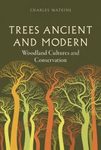![Primrose Primrose]()
Click to have a closer look
About this book
Customer reviews
Biography
Related titles
About this book
For centuries the common primrose has spread breathtaking carpets of pale lemon yellow across the globe. It and its close relatives the cowslip and oxlip are flowers of the field, hedgerow and meadow. Abundant, edible and beneficial for many ailments, they have supported civilization's social and cultural foundations. As harbingers of spring, they have captured the attention of gardeners, plant breeders and scientists, while artists and poets have found them essential as both subject-matter and muse. William Shakespeare introduced us to 'the primrose path', a pleasurable but destructive route, in several of his plays, and Charles Darwin spent more than thirty years working with primroses to clarify the origin of species and solve an elegant evolution mystery.
This is the story of how primroses became one of the most important garden flowers, circling the earth, adapting to human civilization and yet holding their own on inaccessible craggy summits where they may never be seen. Bringing together stories, facts and folklore from around the world, this is a delightful guide to this hugely popular flower.
Customer Reviews
Biography
Elizabeth Lawson is a naturalist, writer and lecturer specializing in horticulture and natural history. A resident of New York, Elizabeth is the President of the American Primrose Society and her most recent publication is an essay on Margaret E. Murie in Green Voices: Defending Nature and the Environment in American Civic Discourse (2016).
Monograph
By: Elizabeth Lawson(Author)
288 pages, 115 colour & b/w photos and colour & b/w illustrations
"This comprehensive treatment of the botanical genus Primula is part of the Reaktion's Botanical series, which integrates plant groups' horticultural and botanical information with social and cultural information about the group. Primroses are among the most important garden flowers, particularly in Europe [...] Plant explorers like Reginald Farrer and George Forrest scoured Asia for new plants for European gardens, and primroses were among their most important finds. Lawson writes that three native British primroses functioned as "both muse and guinea pig" for Charles Darwin, to whom she devotes an engaging chapter. In another chapter she traces the history of how horticulturists have hybridized and selected the plants for centuries, enormously expanding the colors and forms available to gardeners. In addition the author examines the abundant literary references to primroses in prose and poetry, and the appearance of the primrose in works of art over many centuries. The book is beautifully crafted, rich with colorful illustrations, and written in a straightforward style that includes many anecdotes. Recommended."
– Choice
"Primrose is full of fascinating historical information [...] the book certainly broadened my perspective on the history of primroses. It is delightful reading. I urge you to delve into this well researched and informative book [...] Your next walk down the primrose path will give you a whole new appreciation for the primula species."
– Journal of the American Primrose Society
"Lawson's book is graced with over 100 other splendidly reproduced illustrations: botanical paintings of individual plants, photographs, herbarium sheets, electron micrographs, handwritten letters with line drawings, portraits of primrose breeders and historians, and posters from popular culture incorporating the flower. Around and among these visual delights are striking condensations of history and biography."
– North American Rock Garden Society 'Book of the Month'
"Reaktion Books' Botanical series continues to impress. Primrose is yet another triumph to add to the growing collection. This is a well-written, profusely illustrated, plethora of primulacean pulchritude, anecdotes, and cultural history: Read it!"
– Botany One
"I was impressed by the exquisite binding and quality of the printing and contents [...] The book is lavishly illustrated and Elizabeth Lawson has unearthed many new pictures and paintings of the Primula family [...] This volume provides a refreshingly new and erudite perspective on the Primula family which will be enjoyed by Primula lovers worldwide."
– Val Wooley, auricula breeder and horticulturalist














































